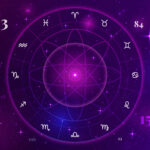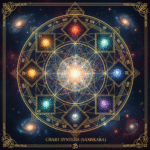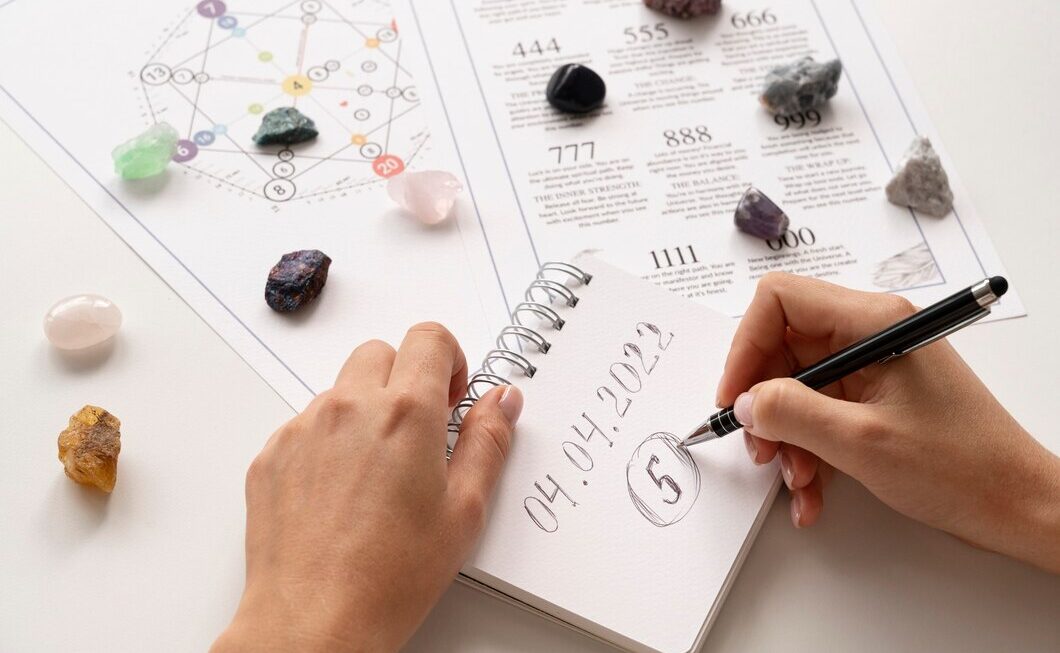In the profound science of Vedic Astrology (prashna vedic astrology), the act of Prashna chart casting is a sacred, detective-like endeavor. It’s not a mere calculation; it’s the meticulous capture of a cosmic snapshot. This chart is an immediate oracle, created not from the time an individual was born, but from the time a question itself achieves its ‘birth’—the moment it is fully verbalized and understood by the astrologer.
This distinction is the very foundation of Horary Astrology and is what grants it surgical precision. The entire methodology—the focus keywords, the house interpretations, the planet’s roles—all hinge on correctly identifying the question moment chart.
Defining the ‘Moment of Question’
The single most critical step in prashna chart casting is establishing the precise time and location for the chart. This step dictates the accuracy of the entire subsequent analysis.
A. The Astrologer’s Anchor (Opinion)
Opinion: The only valid moment for casting the horary chart is the exact second the question fully registers in the consciousness of the astrologer.
Reason: The universe is a system of instantaneous reflection. The astrologer acts as the sensitive receiver, the human instrument through which the divine question (Prashna) is filtered. The planetary alignment at the astrologer’s location reflects the cosmic answer to the receiver. If the question is received via email or text, the chart is cast at the exact time the astrologer reads and comprehends the query. If asked in person, it’s the moment the last word is uttered and understood.
Example:
- A querent in New York emails a question at 3:00 PM EST.
- The astrologer in London reads it at 8:15 PM GMT.
- The chart is cast for 8:15 PM GMT, London. The chart’s Ascendant (Lagna) will be calculated for London, and the planetary positions will be for that exact moment.
Opinion/Restatement: Therefore, the integrity of the question moment chart rests entirely on the astrologer’s disciplined attention to capturing this precise cosmic moment, thereby forging the Prashna difference from the fixed Natal Chart.
B. The Location Variable
The location used is almost universally the astrologer’s physical location at the moment the question is heard. This ensures that the chart’s houses (Bhavas), which are sensitive to longitude and latitude, align with the astrologer’s frame of reference, which is paramount in classical Jyotish.
Step-by-Step Guide to Casting the Chart
Casting a Prashna Chart follows the standard astronomical process of casting a Natal Chart, but with the specific time and location of the question.
Step 1: Record the Precise Data
- Date: The full calendar date.
- Time: The hour, minute, and second of the astrologer’s comprehension.
- Place: The city, state, and country of the astrologer’s location.
Step 2: Calculate the Lagna (Ascendant)
Using standard astrological software (or ephemeris), the most important calculation is the Ascendant (Lagna). The sign rising on the Eastern horizon at that exact time and place becomes the 1st House, which always represents the Querent (the person asking).
Step 3: Plot the Planetary Positions
The longitudes (degrees, minutes, and seconds) of the Sun, Moon, Mars, Mercury, Jupiter, Venus, Saturn, Rahu, and Ketu are calculated for that moment.
Step 4: Analyze the Lagna and the Moon
Before moving to the question’s specific house, the astrologer must examine the quality of the chart itself. This is a crucial validation step unique to Prashna.
- Lagna Lord’s Strength: If the ruler of the Ascendant is well-placed (exalted, in its own sign, or in a Kendra/Trikona house), the querent has the strength, sincerity, and good fortune to handle the situation successfully. A debilitated 1st Lord in a Dusthana (6th, 8th, or 12th house) suggests the querent is weak, misguided, or that the question is ill-fated.
- The Moon’s Condition: The Moon represents the mind (prashna application emphasizes the flow of consciousness).
- Good Sign: Moon in a Kendra (1, 4, 7, 10) or Trikona (5, 9) shows mental clarity and focus.
- Bad Sign: Moon in the 6th, 8th, or 12th house indicates anxiety, confusion, or a potentially deceptive question. Void of Course (not aspecting a major planet before changing signs) often suggests that nothing will come of the query.
Step 5: Identify the House of the Quesited (The Goal)
This step links the specific question to the cosmic chart.
| Question Topic | Key House (The Quesited) | House Lord |
| New Business/Career | 10th House (Karma/Action) | 10th Lord |
| Spouse/Partner | 7th House (Partnership) | 7th Lord |
| Money/Loan Return | 2nd House (Assets) or 8th House (Other’s Money) | 2nd or 8th Lord |
| Lost Item | 4th House (Fixed Property/Home) or 2nd House (Movable Assets) | 4th or 2nd Lord |
| Litigation/Victory | 6th House (Enemies/Disputes) | 6th Lord |
Decisive Factors: Judging the Horary Chart
Unlike the natal chart, where predictions unfold over decades via Dashas, the Prashna chart is judged using instantaneous Yogas and planetary relationships.
The Connection Principle (The Answer)
The answer to the question is found in the connection (aspect, conjunction, or mutual exchange) between the Lagna Lord (Querent) and the Lord of the Quesited (Goal).
- Positive Outcome: If the two lords are forming an auspicious aspect (trine, sextile, or conjunction) or an Ithasala Yoga (an applying aspect, meaning they are moving toward each other), the answer is a firm “Yes.” The event is likely to materialize.
- Negative Outcome: If the two lords are in an antagonistic relationship (6th/8th, 2nd/12th) or an Isarapha Yoga (a separating aspect, meaning they have already moved apart), the answer is “No,” or the outcome will be achieved only with great difficulty or delay.
Consideration of Omens (Nimitta) in Prashna
In traditional Jyotish, the horary chart creation is also validated by physical omens (Nimitta) and auditory signals (Shakuna) observed by the astrologer at the time of the question.
- A pleasant smell, the sound of music, or the sight of a beneficial object can strengthen a positive chart.
- A loud, sudden noise, the sound of conflict, or the sight of an animal fighting can confirm a negative chart prediction.
Conclusion: The Power of Cosmic Intent
The act of Casting a Prashna Chart is a rigorous discipline that encapsulates the Vedic belief that the cosmic clock never ticks in vain. Every moment, and especially every moment a sincere question is posed, is imbued with the entire potential of the universe. By fixing the precise time and location—the birth data of the query—the astrologer unlocks a precise, moment-by-moment narrative that reveals the most likely future trajectory of the question. Prashna is, in its essence, the most accessible form of divine counsel, offering clarity and courage to the seeker standing at life’s inevitable crossroads.











